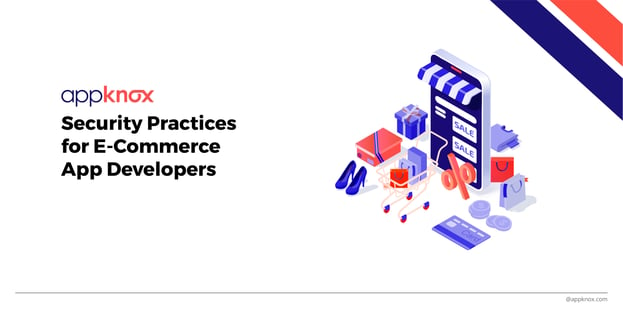
BLOG

BLOG
Smartphones have become a central part of our lives, surpassing the popularity of desktops and laptops. That's why brands and companies these days need to take on a mobile approach when designing and creating applications.
Why? Because an overwhelming number of mobile users spend their time these days on mobile apps. Therefore, it's crucial to consider the security of your mobile app. That way, all your sensitive data is safe and secure.
In this post, we'll walk you through the nine best security practices for eCommerce app developers, but first, let's walk you through the basics:
Users leave their digital footprint behind when they make online purchases or transactions. This can be in the form of:
All of the data optimizes the user experience. However, this data also makes you susceptible to external threats.
So, when talking about mobile application security testing, we mean all the measures you must take to secure the applications from external threats.
That way, hackers can't access personal and financial information and confidential data collected from lost and stolen devices.
Here are the nine best security practices eCommerce developers should adopt:
When you build an e-commerce website, one of the best ways to secure mobile apps is to write reliable code. It will protect your app from possible attackers. Usually, these attackers will attempt to tamper with your code. So, you need to ensure that it's obfuscated and minified.
Regular app security testing and bug fixing are essential to security code. If your code is breached, you must ensure it's agile enough to make updates easily.
More than ever, testing methods like SAST (Static Application Security Testing) have become mandatory for IT organizations.
Usually, these tests obtain your source code and then try to find any micro security issues. However, our advanced penetration testing solution allows testers to look for application vulnerabilities using the same techniques that hackers would use in a real-time environment.
Here is a quick guide on penetration testing to get you started.
Developers heavily rely on API security testing to simplify their work. However, APIs can also be highly susceptible to external breaches. To ensure maximum security, we recommend that APIs be centrally authorized.
Usually, unauthorized APIs are loosely coded and can unintentionally grant hackers access. So, for maximum security, ensure that your APIs are centrally authorized.
Security isn't something that you design once when developing a mobile app. It needs regular patches. Usually, these patches are defined by time requirements.
The security measures you implement on your mobile app today might not be enough to maintain enterprise mobility security over time. To overcome these obstacles, you must continuously update security measures.
Use transit encryption whenever your app transmits API keys, usernames, passwords, and critical data. Many internet-connected devices rely on open WiFi access in airports, coffee shops, and other public places. However, these can also make it easy for malicious individuals to access and intercept your data.
That's why developers must use TLS in the form of HTTPS. If you're using HTTPS, utilize a digital certificate and ensure that your app correctly checks it. Getting an excellent digital certificate from a reputable vendor is relatively inexpensive.
It also ensures that your customers communicate with your servers, not anyone else. In the same way, you should also keep an eye on current technologies and use the latest security features.
Third-party libraries make mobile development easier. But it doesn't mean that it's without consequences.
To make the most of mobile application security, you must test the code before using it in an app that relies on third-party libraries. Another excellent advice is to limit the number of libraries used in a code. It would be best if you also had a policy on handling them.
An established policy like third-party elements will help you ensure mobile app security much more quickly.
Not using high-level authentication can lead to security breaches. That's why developers must design their apps to accept solid alphanumeric passwords.
In addition, it would help if you made it mandatory for users to change their passwords periodically. For sensitive apps, biometric authentication, such as fingerprints or retina scans, can strengthen security.
It would help if you also encouraged users to authenticate this to avoid potential security breaches.
One of the most valuable pieces of data you'll likely have is your users' credit card information. Whether you store it yourself or pass it on to a third-party service, you must ensure that the link in the payment processing chain is adequately secured and reputable.
To protect users' sensitive data, many developers prefer storing it in the device's local memory. However, one of the best practices is avoiding sensitive information, which can pose a security risk.
You can also minimize the log by adding an auto-delete feature that automatically deletes data after a certain period. This will give you, as a developer, and your customers greater peace of mind.
It is anticipated that individuals will increasingly rely on their mobile phones. With all of its capabilities, there is no doubt that they have already become a vital part of our lives. Knowing the potential risks that may arise from security issues and learning the right strategies to keep your data secure are critical to mobile application protection.
Regular security testing, coding practices, and penetration tests significantly enhance security. If you are confused about where to start on your app security journey, try Appknox, an enterprise-grade solution built for every stage of the app lifecycle.
From identifying critical vulnerabilities to ensuring compliance, Appknox delivers precision, speed, and confidence—empowering you to build secure apps.
Sign up for a free trial today to get automated VA on your app.

